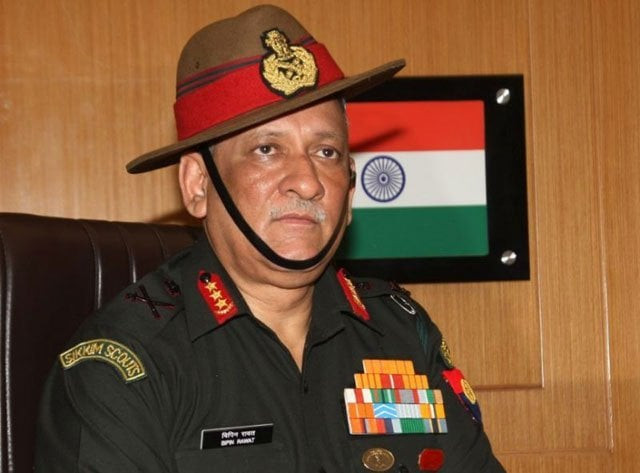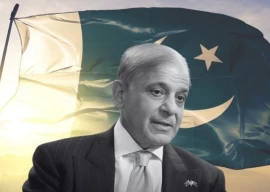
The Indian CDS is expected to enhance coordination among the three services — the army, navy and air force. The CDS will be a unified military advisor to the PM and Minister of Defense. The decision was based upon the need for jointness in the wake of the 1999 Kargil War. One major conclusion of the war was the lack of effective communication among the three services; hence the need for a coordinating HQ.
At present, there are two systems of higher command in vogue in the contemporary militaries. One is the Committee System headed generally by a chairman, like in Pakistan, where it is designated as Chairman Joint Chiefs of Staff Committee (CJCSC). The chairman in the Committee System does not have any executive authority over the employment of individual services, which remain the domain of the respective service chiefs. The chairman ensures the important task of coordination, budget distribution, R&D and most importantly, effective communication among the services during hostilities and the unified employment of nuclear arsenal, in Pakistan’s case.
The other is a Command System, where the CDS or equivalent exercises an effective command of all services including important promotions and appointments in addition to other functions across the board. This system prevails in the UK, US Australia, China and Japan. However, the nomenclature of the post may vary, such as the supreme commander, commander-in-chief and chief of staff, etc. Both systems have their merits and demerits. But generally, the CDS with executive authority works best in countries with a large military with a certain level of sophistication and automation; wider geographic areas of interest and influence; better civilian control of the military and ingrained inter-service trust and confidence. For the last point, frequent joint training at basic, mid-career and advanced levels — particularly for officer cadre — is considered useful and compulsory.
India earlier had the Committee System with a Chairman of Chiefs of Staff Committee (COSC), similar to our CJCSC. The new Indian CDS apparently will enjoy strategic command but exercise no command over individual services, where their respective chiefs will be in command and continue to report directly to the PM and defence minister. Although the CDS will have the authority to direct the army, navy and air force commanders and to even create Theatre Commands — commands comprising more than one service to deal with a particular situation in a particular area — as and when needed.
The new CDS reportedly has the Andaman and Nicobar Command (A&NC) besides command over tri-service training institutions and other agencies, organisations and commands including those related to cyber and space. The CDS would also function as a military advisor to the Nuclear Command Authority, advising the government on employment of nuclear weapons in case of war.
He will head the Department of Military Affairs. Defence procurement is another area of interest, where he is a member in the Defence Acquisition Council under the chairmanship of the defence minister, and Defence Planning Committee, chaired by the NSA. The CDS will be required to trim the weapons procurement procedures; implement five-year Defence Capital Acquisition Plan (DCAP), and two-year roll-on Annual Acquisition Plans (AAP), as a follow up of ICDP or Integrated Capability Development Plan. He would assign priority to the inter-services capital acquisition proposals.
The CDS is expected to integrate the operations of Indian Armed Forces and ensure optimal utilisation of infrastructure in the three services. One of the most profound roles seems to be bringing about reforms in the forces for greater operational convergence, combat effectiveness and reducing wasteful expenditure.
The Indian military seems to be transiting towards a hybrid system with insufficient clarity at this point about the place and status of the CDS. In essence, CDS would be “first among equals” as described by some officials. Although the contours of the new appointment would emerge overtime, there seemingly would be teething issues, given the Indian military and the peculiar nature of the South Asian outlook towards authority. For the service chiefs, especially the COAS to cede authority and take directions from “a first equal” would take time. The service chiefs and the CDS reporting directly and simultaneously to the political leadership are likely to undermine the time-tested principle of “unity of command”, a cardinal principle in militaries all over the world and throughout history. Command is never shared.
For the system to work, the appointment of the Indian CDS can take on two possible directions. Either CDS can eventually be like our CJCSC or he would assert and become an effective CDS, like in the UK and Australia. In a military strife with inter-service and inter-arm rivalries, much pull and push is expected for and against the new CDS and for acquiring of greater elbow room. Services’ chiefs will assert to remain relevant. Like Pakistan’s CJCSC, the Indian CDS is expected to be mainly from the army as the Indian military strategy is continental or land-based. In the future, they might have a deputy CDS from the IAF or the navy like in Turkey; where the overall commander is from the land forces with a deputy from the air force. It is fair to conclude that the personalities of General Rawat and other services chiefs would ultimately crystallise the operational practices and working boundaries.
The reform agenda for the new CDS is another area of possible contention. The newly appointed Army Chief, Gen Manoj Naravane, may find himself constrained to follow the unfinished reformist agenda of Gen Rawat in the army. Likewise, with relatively less experience and exposure pertaining to IAF and IN, Gen Rawat may find himself handicapped allowing greater independence to these service chiefs.
As a personality, Gen Rawat has proved more amenable to BJP’s political manipulations. He was criticised for publically speaking against violent anti-Citizen Acquisition Act (CAA) protests. For the wider Indian military, his tilt towards BJP may undermine the military’s secular and apolitical moorings. Operationally, besides preparing for a two-front war, he would infuse the same hawkish spirit into the IAF and IN in a new normal with Pakistan. He may now vigorously pursue the “Bipin Doctrine” that advocates “breaching the sovereignty and territorial integrity of another county by executing surgical strikes without considering consequences”.
Wowing neutrality among the services, he may find it hard to toss his tilted Gokha hat after 41 years. When asked by reporters on January 1 about the new assignment, Gen Rawat replied, “My head is feeling lighter.” I hope he did not mean it literally, as the party has just started.
Published in The Express Tribune, January 7th, 2020.
Like Opinion & Editorial on Facebook, follow @ETOpEd on Twitter to receive all updates on all our daily pieces.














COMMENTS
Comments are moderated and generally will be posted if they are on-topic and not abusive.
For more information, please see our Comments FAQ